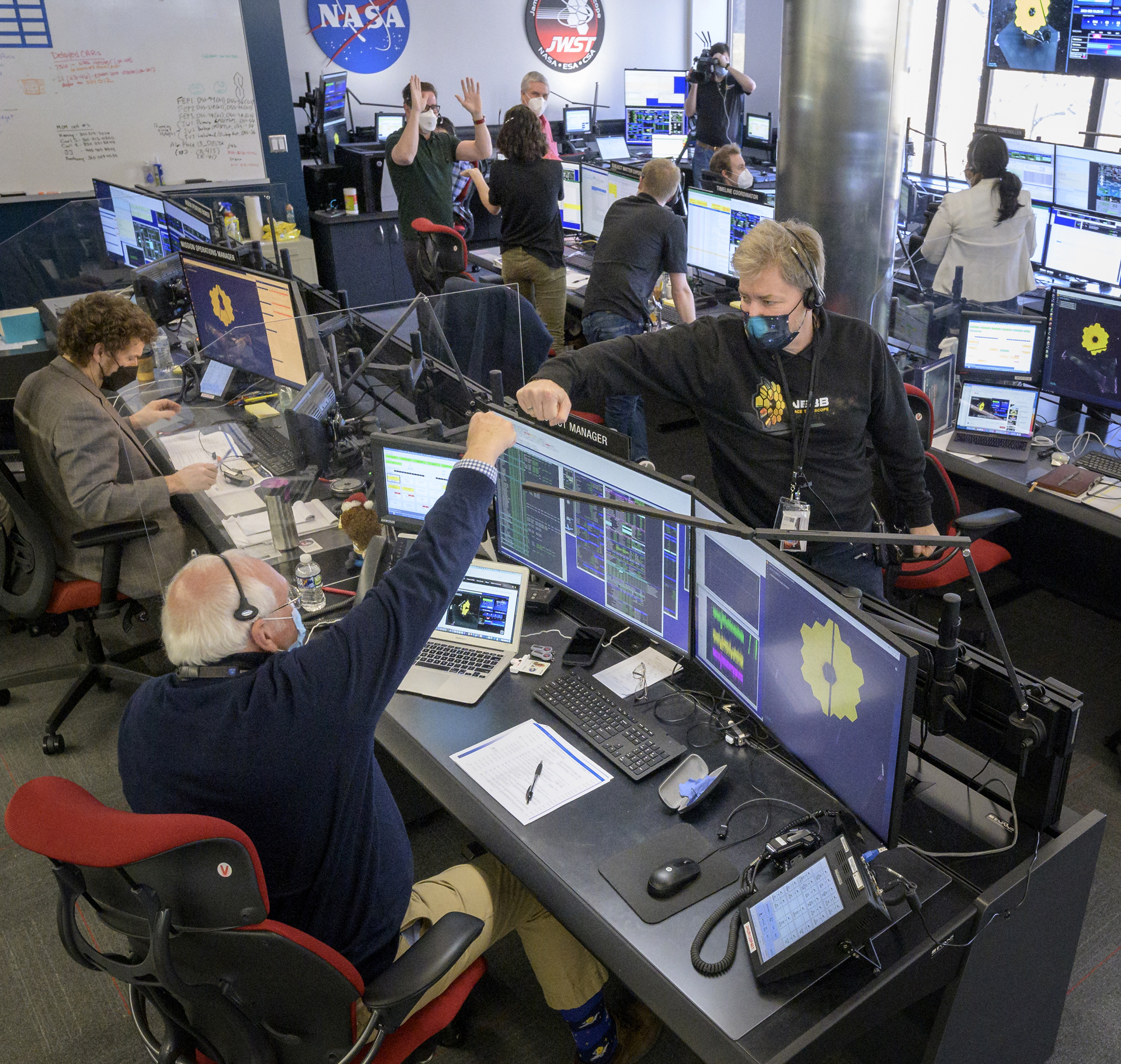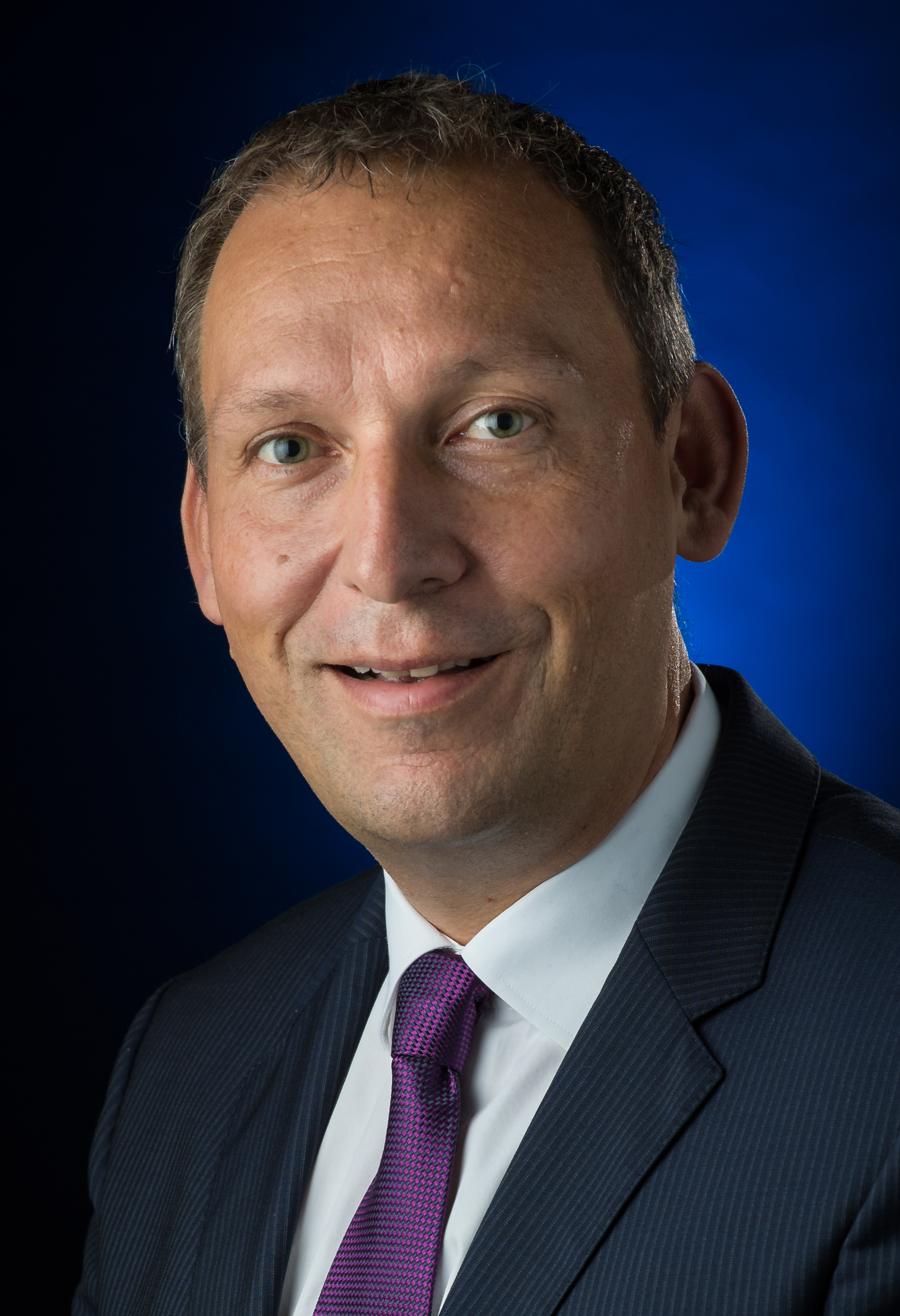NASA's James Webb Space Telescope has reached its final destination. Let's celebrate the team that got it there (op-ed)
Thousands of people worked hard to get Webb where it is today.

Dr. Thomas Zurbuchen is associate administrator for NASA's Science Mission Directorate. He contributed this article to Space.com's Expert Voices: Op-Ed & Insights.
There is a new speck of light in the sky right now, best observable from Earth around midnight. This blurry speck — dim as it may be, small as it may be — represents the grit and unity of thousands of people who worked together to place it in the heavens.
That light is reflecting down to us from the most magnificent space telescope ever devised by humans. After being folded up into a rocket and launched into space on Christmas Day, NASA’s James Webb Space Telescope has now arrived at its destination, fully deployed into its magnificent final form. Like a butterfly leaving behind its Earth-bound caterpillar shape, a new, larger and more beautiful observatory transformed over the course of a weeks-long journey in space. Now, from its new vantage point nearly 1 million miles (1.5 million kilometers) away, it will scan the skies for years to come, offering us a never-before-seen view of the universe.
The complexity of this transformation cannot be overstated. A tennis-court-sized, five-layer sunshield unfurled with incredible precision. The secondary mirror then extended out on a 24-foot-long (7.2 meters) tripod. And on Jan. 8, the team finished unfolding the largest mirror ever flown in space — composed of 18 gold-colored, honey-comb-like hexagons spanning 21.3 feet (6.5 m) across altogether. Thousands of parts had to work perfectly in sequence to get it right — and it all had to be set up remotely, from half a million miles (800,000 km) away, with no way to go visit it and manually make fixes. And it worked.
In photos: The Christmas launch of NASA's James Webb Space Telescope
We did it. We did it, and you can see that speck of light in the sky because of an incredible team with extraordinary tenacity.
To the untrained eye, breakthrough innovation and exploration looks awfully close to crazy and impossible. The original goal was to look back in time over 13.5 billion years to observe the first galaxies and stars in our universe. And while we had many supporters, we also had many people, right from the beginning, who thought it couldn’t be done. Simply having the courage to set that lofty, outrageous goal some 25 years ago — that, right there, was the first show of daring from this mission.
Get the Space.com Newsletter
Breaking space news, the latest updates on rocket launches, skywatching events and more!
A team then had to take that vision and turn it into reality: the biggest, most powerful, most complex space science observatory the world has ever seen. To do that, we needed inventors and implementors. We needed visionaries and leaders who focus on realism of technology, schedule and cost. We needed both decades-long experience and youthful, unfettered enthusiasm. And we needed commercial and government stakeholders together with international partners, all aligned behind one purpose: to achieve this outlandish science goal. Truly, the only way big goals are achieved is by diverse teams that come together as one.
It was at times a tough path. But silently and without much attention, an excellent and united team formed, which kept learning from mistakes and remained focused with tunnel vision on its goal. Through adversity and disappointments, this team learned the hard way that excellence is not the absence of errors, but the steadfast focus on improvement. True excellence is almost never about words, but about actions.
Now, this origami telescope is in space, fully unfolded, and reflecting the sunshine back to us. After cooling down to its operating temperatures and setting up all systems, the telescope will be ready to reveal a new vision of the cosmos to us in five months or so. But, as we wait for these magnificent first-light images, we admire the grit and sheer excellence of the team that got us there.
As I have seen teams land on Mars, fly the first Mars helicopter, launch and operate high-tech missions that protect and improve life on Earth, and now build and deploy the world’s most magnificent space telescope, I no longer believe in the importance of superstars to achieve such audacious goals. I believe in the power of diverse teams that bring all their experiences collectively to bear to overcome obstacles.
And that is why, as Webb circles its new home a million miles away, I feel so hopeful. I hope you see what I see when you see that small speck of light: The incredible success we can accomplish when the right people work together — not only for the future of space exploration, but for the big global challenges we worry about each and every day. Big goals often have a hard path to success. But a team with grit decides that they will create success, long before that is evident to others. And long before any of us could see that dim speck of light in the sky.
Follow us on Twitter @Spacedotcom or on Facebook.
Join our Space Forums to keep talking space on the latest missions, night sky and more! And if you have a news tip, correction or comment, let us know at: community@space.com.

Dr. Thomas Zurbuchen has been associate administrator for NASA's Science Mission Directorate since 2016. During his career, Zurbuchen has authored or co-authored more than 200 articles in peer-reviewed journals in solar and heliospheric phenomena. He earned his doctorate and Master of Science degrees in physics from the University of Bern in Switzerland. His honors include multiple NASA group achievement awards, induction as a member of the International Academy of Astronautics, a NASA Outstanding Leadership Medal and the 2018 Heinrich-Greinacher prize, the leading science-related recognition from the University of Bern. Zurbuchen engages people worldwide with NASA’s work and the inspiration of science.









